
Azolla: A Comprehensive Guide to ID, Treatment and Prevention
Azolla is a free floating aquatic fern. There are two species in Australia: Azolla filiculoides and Azolla pinnata. Both are native and can form dense mats that cover the entire water surface in freshwater systems.
How to identify Azolla
It’s important to be able to differentiate between the two common species of azolla as treatment may vary. Let’s identify the key characteristics that set the different species apart.
Azolla Filiculoides
| Scientific Name | Azolla filiculoides |
| Description | Azolla filiculoides is a small, free floating freshwater fern, green to reddish-brown or purplish orange or red at the edges, branching freely, and breaking into smaller sections as it grows. The adult plant is approximately 25-35mm long, with the length of the individual frond (“leaves”) being approximately 1-1.5mm. Plants can change colour from green to brown and red as a result of changes in sunlight intensity (and shade) as well as ambient temperature. |
| Habitat | Stationary and slow-moving water bodies, especially where nutrients are high. E.g. ornamental ponds, fish ponds, dams, irrigation dams. |
| Distribution | NSW, QLD, SA, TAS, VIC |
| Dispersal | It can be dispersed by attaching to animals such as water birds, turtles or livestock, humanactivity, floods or wind dispersal (spores). |
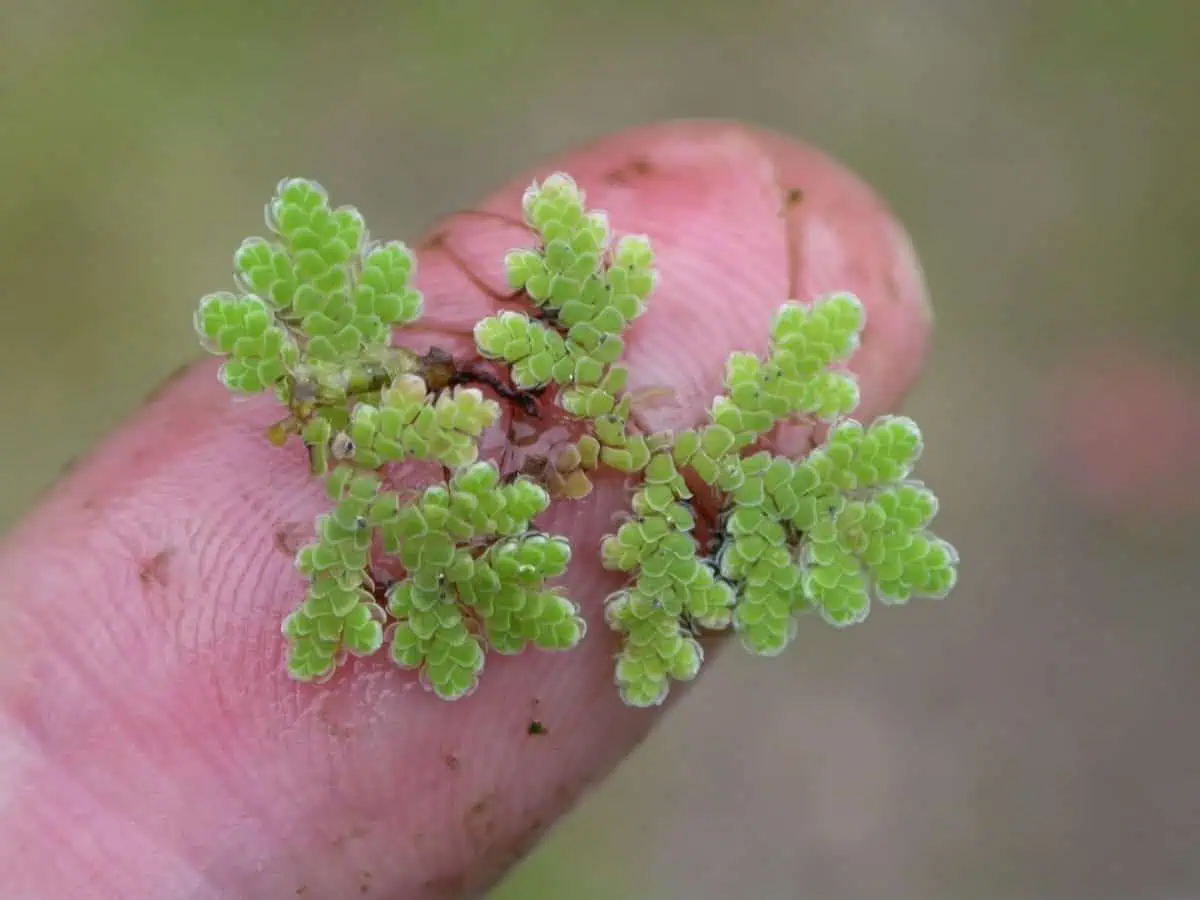
Azolla Pinnata
| Scientific Name | Spirodela polyrhiza |
| Description | Azolla pinnata is a small free floating fern with a triangular frond measuring up to 2.5cm. The frond is made up of many rounded or angular overlapping leaves each 1 or 2mm long. They are green, blue-green, or dark red in colour and coated in tiny hairs, giving them a velvety appearance. The hairs make the top surface of the leaf water-repellent, keeping the plant afloat even after being pushed under. Roots have fine lateral rootlets, appearing feathery. |
| Habitat | Stationary and slow-moving water bodies, especially where nutrients are high. E.g. ornamental ponds, fish ponds, dams, irrigation dams. |
| Distribution | NSW, NT, QLD, SA, TAS, VIC, WA |
| Dispersal | It can be dispersed by attaching to animals such as water birds, turtles or livestock, human activity, floods or wind dispersal (spores). |
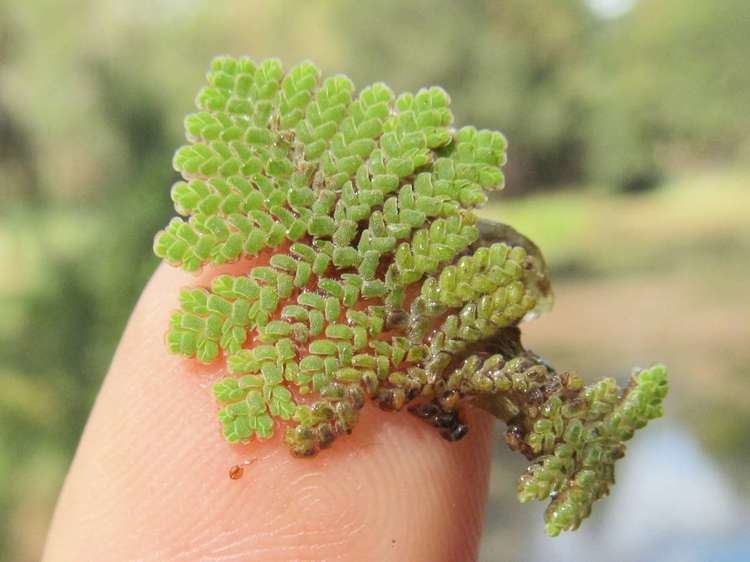
Across Australia there is a variety of distribution with these two types of azolla, with the breakup between states looking like this:
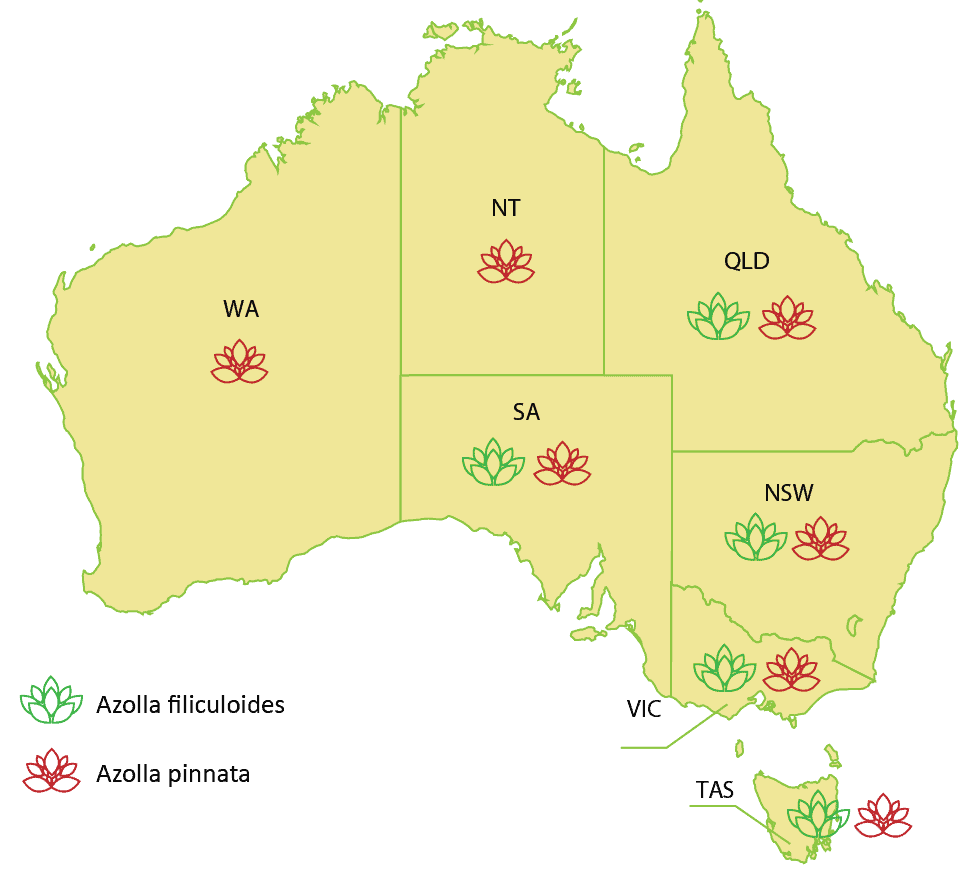
Why too much azolla is bad for your waterway
Although Azolla is native to Australia, it is a known weed under the right conditions due to its ability to double in biomass in just a few days. In some areas, Azolla is recognized as an invasive plant, and its ability to reproduce via fragmentation is the most likely cause of its explosive spread. Azolla can quickly establish and form dense monospecific mats that significantly alter the physical and chemical features of the water.
Once established, these floating mats can negatively impact the water by shading out submerged plants, inhibiting their photosynthesis and stopping oxygen diffusion. Aquatic fauna are also affected beneath the mats, deteriorating the food web of the aquatic ecosystem.
The dense mats formed by Azolla directly impact water quality, commonly leading to a decrease in pH and oxygen concentration and an increase in nitrogen and phosphorus compounds. The shading effect accelerates the succession of aquatic plants and increases organic matter from the death and sinking of the plant biomass.
Decomposition of the weed requires large amounts of oxygen, leading to a drop in oxygen levels in infested areas, reducing the survival of aquatic organisms, especially fish. The decomposed material also pollutes the water, making it unfit for use.
Azolla Growth Stages
Not all treatments for azolla are effective at any growth stage. So before taking any action to treat the azolla, it is important to fist recognise how severe the bloom is. Generally it will be in one of the four stages below:
Primary Growth Stage
0-30% of the water body is covered in Azolla

Primary growth occurs in the early stages of an infestation, when plants are not crowded. The water surface is clearly visible between plants and the plant is lying flat on the surface of the water.
Secondary Growth Stage
30-60% of the water body is covered in Azolla
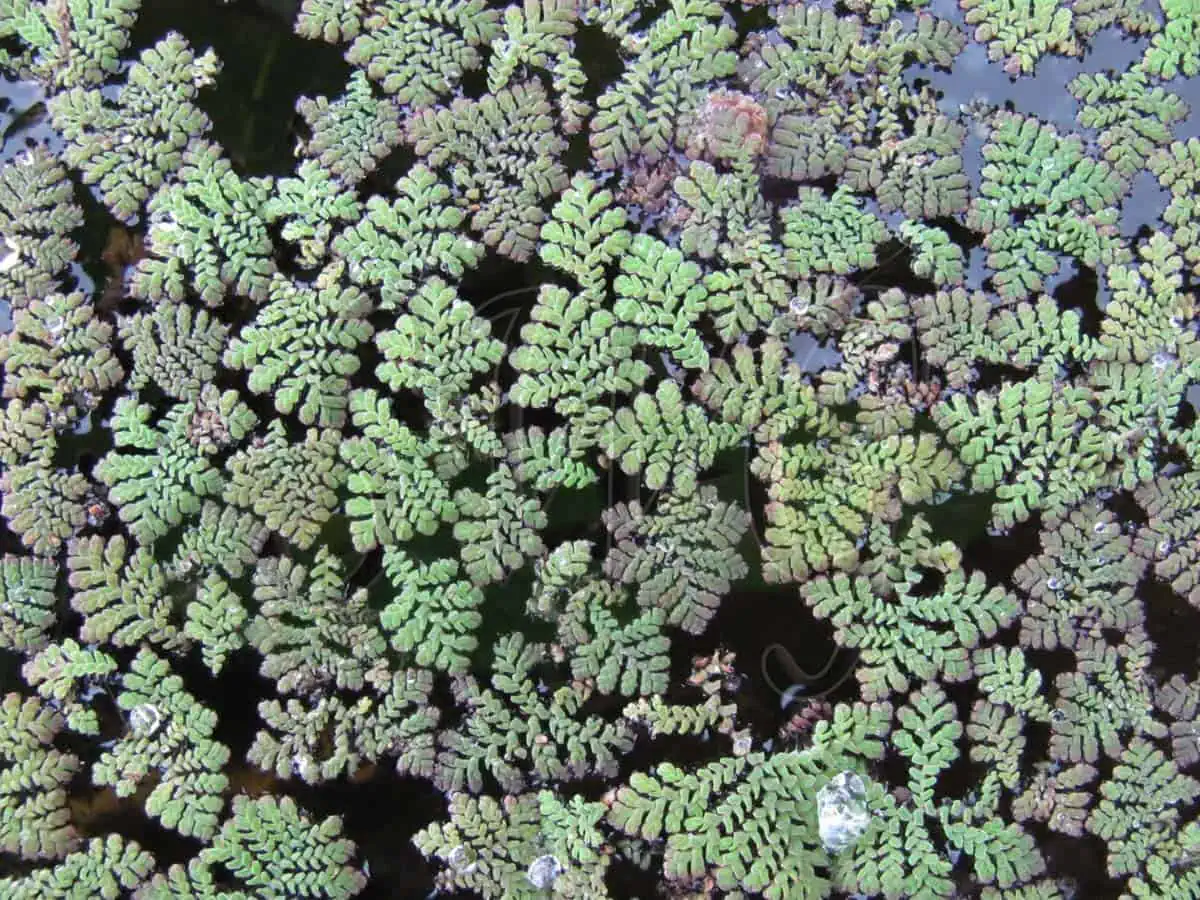
Secondary growth occurs when the water surface is barely visible but the azolla is still only a single layer.
Tertiary Growth Stage
60-100% of the water body is covered in Azolla
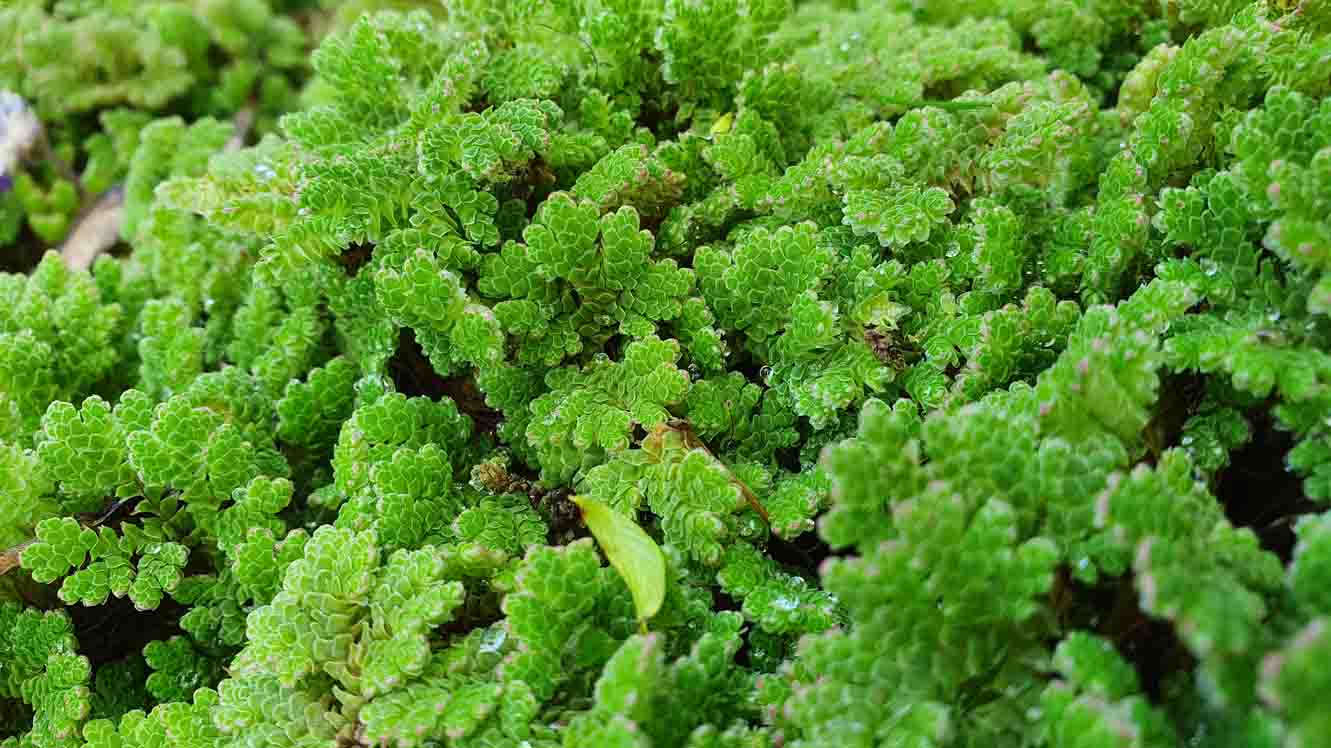
Tertiary growth occurs when the plants become crowded and mature in infestation. The water surface is no longer visible preventing light from entering the water.
Multilayered Growth Stage
100%+ of the water body is covered in Azolla

Tertiary weed mats can become multilayered, displaying ridge-like thickenings as layers build up affecting the water beneath by eliminating submerged plants, preventing photosynthesis and blocking oxygen diffusion from the air resulting in an anaerobic environment.
After establishing which stage the azolla is currently in, use that information combined with the azolla treatment methods below to treat your water body appropriately.
Azolla Treatments
There are two main types of treatment for azolla available. These are:
- Aquatic herbicides (chemical & natural based)
- Physical removal (manual & machine)
This table is designed to help you decide which treatment is the most appropriate for your water body based on the stage of your azolla bloom.
| Chemical Herbicide | Natural Herbicide | Manual Removal | Machine Removal | |
| Primary Growth | ✅ | ✅ | ✅ | |
| Secondary Growth | ✅ | ✅ | ✅ | ✅ |
| Tertiary Growth | ✅ | ✅ | ✅ | |
| Multilayered | ✅ | ✅ |
Aquatic Herbicides
All approved aquatic herbicides can be used on all species of Azolla but not all aquatic herbicides
are effective against all growth stages.
The following Aquatic Herbicides are successful on primary and secondary growth stages:
- AQ200
- Calcium dodecyl benzene sulfonate
- Glyphosate
- Orange Oil (natural based)
The following Aquatic Herbicides are successful on tertiary stages of growth:
- AQ200
- Glyphosate
The following Aquatic Herbicides are successful on multilayered stages of growth:
- AQ200
Benefits of Chemical Control
Typically only one full application with follow up spot treatments is necessary and the treatment is fast, killing azolla within 1-7 days.
Disadvantages of Chemical Control
Treated plants remaining in the water can cause oxygen to deplete within the system, affecting water quality. However, if left untreated water quality will continue to decline. Treating with aquatic herbicides may see a short term decline in water quality, however once cleared a rapid recovery takes place.
There is a possibility of spray drift onto non-target vegetation.
There is a withholding period is once the herbicide has been applied meaning the water cannot be used for either irrigation or watering stock until the breakdown of the herbicide (excludes orange oil).
Physical Removal – Azolla Skimmers
Physical removal can be a labour-intensive method, but has the advantage of being ecologically benign. Small infestations of Azolla in accessible areas can be removed with rakes and fine-mesh nets, and used as either fodder or compost. The disadvantage of this method is that under optimal conditions, Azolla can double its population in 2 to 10 days.
Advantages of Physical Removal
- Removes extra nutrients caused by the breakdown of Azolla thereby reducing the likelihood of future blooms.
- A dense coverage consumes a lot of oxygen leaving little left for fish and other aquatic organisms. Avoids fish kills by ensuring adequate oxygen levels remain.
- Removes habitat for breeding mosquitoes.
Aquatic Surface Skimmers
Can be used on all species of Azolla and primary, secondary and tertiary growth stages. This method is best used in conjunction with spray treatments or when partial removal is desired.
Physically removing Azolla from the water’s surface will reduce the likelihood of future blooms by decreasing the amount of nutrients in your water. Nutrient-rich water lets aquatic vegetation thrive, meaning you might experience more infestations of unwanted Azolla. Easily remove Azolla from your water body in 4 steps:
- Toss the skimmer in the water
- Slowly pull it back in using the string attached
- Dump the Azolla out onto the bank or into a container for easy transport
- Repeat
Tips
- Keep collected Azolla away from water’s edge to avoid recontamination.
- Use the collected Azolla on your garden! Azolla is a great fertiliser.
Aquatic Harvesting
For sizable infestations of azolla, where chemical treatment is neither desirable nor practical, amphibious aquatic harvesting machines provide an efficient solution. These machines can effectively tackle all species of azolla, offering a robust response to even the most challenging proliferation of this aquatic plant. Well-suited to larger expanses, these harvesters can swiftly decrease an infestation’s bulk, significantly reducing its presence in accessible areas.
However, complete eradication of azolla often requires a multi-pronged approach. While aquatic harvesters are incredibly efficient, they may leave remnants in hard-to-reach areas, close to edges, or in shallow waters. Therefore, it’s vital to supplement the use of aquatic harvesters with other control methods. These combined efforts can help ensure a thorough removal of azolla, even from the most stubborn pockets of growth.
Maintaining a Healthy Water Body
Once your water body is clear of azolla, the journey towards maintaining its health has only just begun. Achieving a balanced ecosystem requires ongoing attention and the implementation of the right practices. But what are these practices? How can you ensure your pond or dam remains a thriving, balanced, and healthy environment?
We will be diving deeper into this in following guides, so please check back regularly.
For access to the full step by step comprehensive guide to managing Azolla, including detailed product quantities and recommendations please download our

